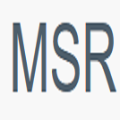Regime detection is vital for the effective operation of trading and investment strategies. However, the most popular means of doing this, the two-state Markov-switching regression model (MSR), is not an optimal solution, as two volatility states do not fully capture the complexity of the market. Past attempts to extend this model to a multi-state MSR have proved unstable, potentially expensive in terms of trading costs, and can only divide the market into states with varying levels of volatility, which is not the only aspect of market dynamics relevant to trading. We demonstrate it is possible and valuable to instead segment the market into more than two states not on the basis of volatility alone, but on a combined basis of volatility and trend, by combining the two-state MSR with an adaptive moving average. A realistic trading framework is used to demonstrate that using two selected states from the four thus generated leads to better trading performance than traditional benchmarks, including the two-state MSR. In addition, the proposed model could serve as a label generator for machine learning tasks used in predicting financial regimes ex ante.
翻译:对贸易和投资战略的有效运作来说,制度探测至关重要。然而,最受欢迎的方法,即两国马可夫转换回归模式(MSR)不是最佳解决办法,因为两个波动国家没有完全掌握市场的复杂性。 过去试图将这一模式扩大到多国多国市场社会责任的尝试证明不稳定,在贸易成本方面可能昂贵,只能将市场分为波动程度不同的国家,这并非与贸易有关的市场动态的唯一方面。 我们证明,将市场分为两个以上国家并非仅仅基于波动性,而是在波动性和趋势的综合基础上,将两国的波动性和趋势结合起来,是可能的和宝贵的。 一个现实的贸易框架用来证明,从四个国家中选择两个这样产生的国家可以比传统的基准,包括两个国家的MSR,导致更好的贸易业绩。 此外,拟议的模式可以作为用于预测前方金融体系的机器学习任务的标签生成者。



